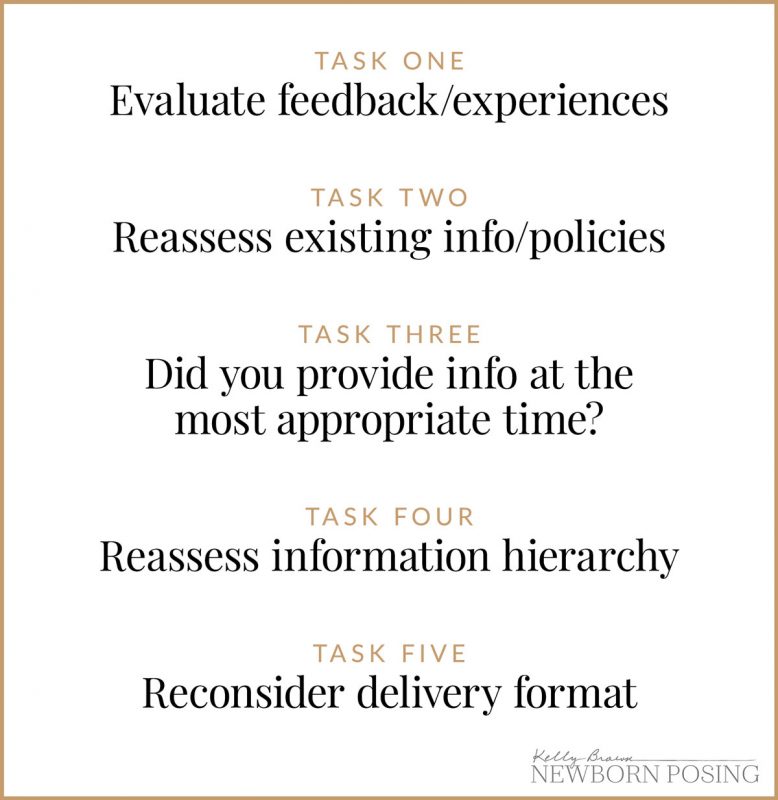I’ve noticed many discussions in the photographic community recently regarding dealing with unhappy clients. So, I want to address that and, specifically, how to turn a negative experience or feedback into a learning experience. It may not always feel like it, but feedback from – or your experiences with – your clients, is one of the greatest business resources we have. So use it!
If a client is unhappy, you’ve likely not delivered to their expectations.. an expectation they may have gained through word of mouth, through your website, or through the information you have – or haven’t – provided them.
It’s easy to be defensive when a client has been unhappy. We all do it. But, whether they disliked the headbands you chose, or expected a different number of proofs in their viewing gallery, the vast majority of these situations give us opportunity to reevaluate and refine our client information and/or processes, as well as how we communicate.
5 STEPS TO RE-EVALUATING YOUR PROCESSES

Evaluate the negative.
Summarise the issue or concern the client (or yourself) has experienced.
Assess your existing information / policy on this topic
Do you have existing info/policy that addresses the issue?
Is the information you’ve provided enough? Too much?
Is it easily lost in a sea of other information?
Did you provide this information at the most relevant time?
When did you provide this information?
How many times did you provide the information?
Was it delivered too early or too late in the experience?
Hierarchy of information.
Not all information is created equal.
It’s lovely to have a beautiful big info pack to send clients. But unless each piece of information is given the appropriate priority, it can be hard for a client to digest and absorb.
Delivery Format.
How did you deliver the information? Consider various formats such as written content, hardcopy printed material, or online videos. Mixing up your delivery formats reduces information fatigue for the recipient.
An Example
Scenario
Clients may email only days after the session to enquire about their image gallery. You’ve probably already told them your turnaround time in an email, an info pack or verbally. But perhaps the info wasn’t in a memorable format. Or, it may have been drowned out by other information delivered at the same time.
Action
Create something tactile. Consider a beautiful postcard which you hand to your clients upon leaving their session. Use succinct points. Answer the most relevant FAQs your clients need to know at this point in their experience. Make sure it’s beautifully branded and presented. In addition to providing key information, this helps strengthen your brand image in the client’s mind.

If you’re a newborn photographer, remember your clients are often sleep-deprived. They’re undergoing a new experience as parents. Additionally, a newborn session is a fairly unique photographic experience for the client. It may be beneficial to send pertinent information more than once, delivered in different formats, for easy consumption.
And, regardless of your genre, it’s important that you provide clear, easily digestible information. Set expectations upfront in terms of what may and may not be possible.
WHY IS THIS PROCESS IMPORTANT?
Taking time for this process gives us stronger resources and improves our client communication in the long run. It frees up time to work on other areas of our business. Constant reevaluation is essential to help our businesses grow.
How often do you re-evaluate your client information and processes? Do you have any other areas of business processes you’re struggling to refine? Let us know in the comments!

